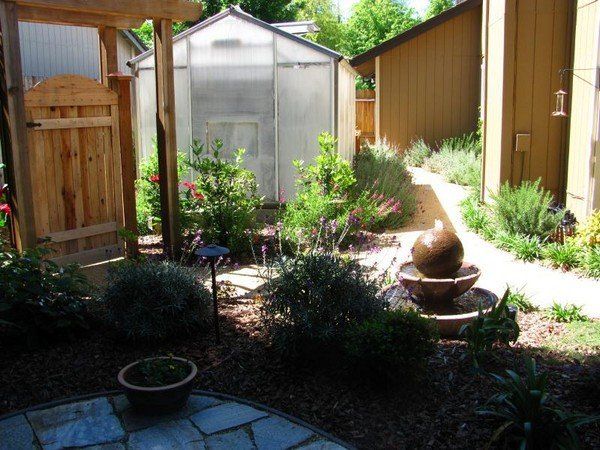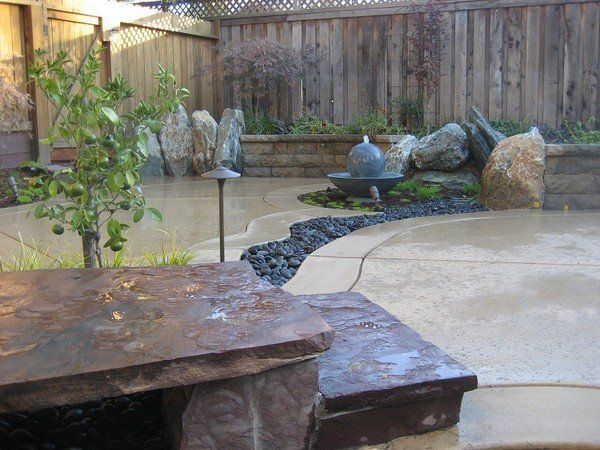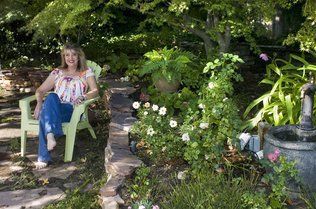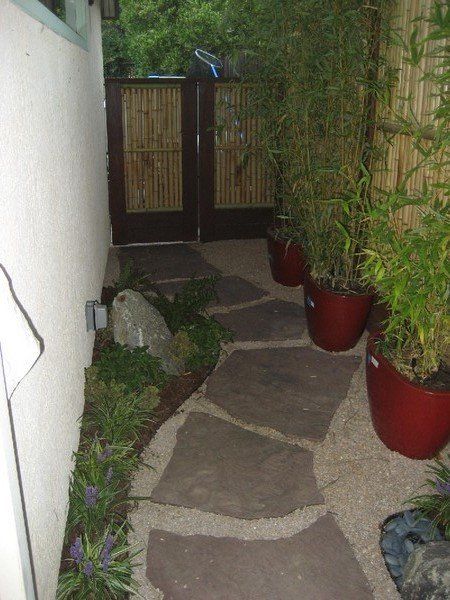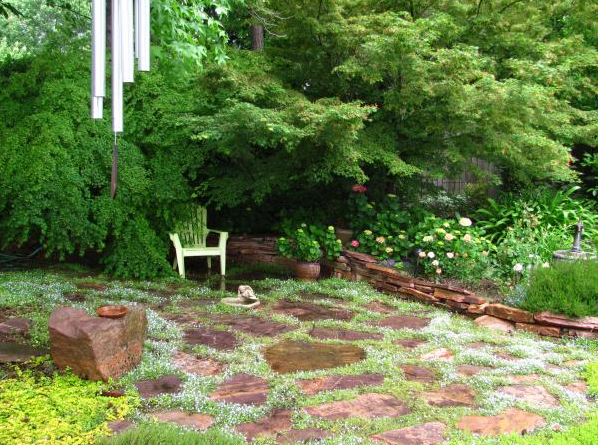Get your landscape ready for spring during record drought
- By Susan Silva
- •
- 18 Mar, 2014
- •
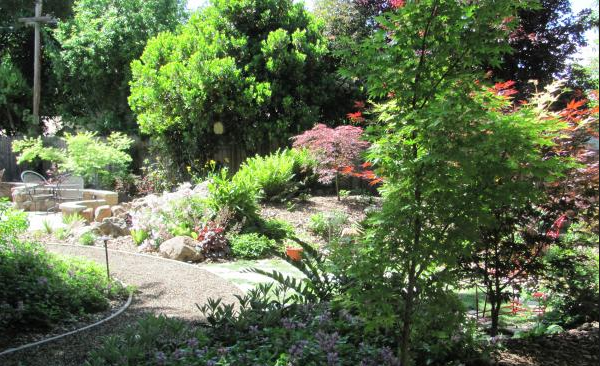
Now that spring has arrived, there is a lot that people can do to get their landscapes fresh and ready for spring while continuing to stay water wise.
Start to think about ways to reduce and or eliminate the water-wasting lawn from your landscapes. There are so many ways to have a beautiful lush-looking drought tolerant yard without planting a lawn.
Drought tolerant plants and trees can replace the water-wasting lawn with an array of gorgeous colors and textures that bring so much beauty to the garden while drawing in the birds and butterflies. Incorporating hardscape areas and walks require no water at all with a multitude of choices in concrete, gravel, flagstone, pavers and brick, etc. available. It's important to start the process by browsing through garden and landscape books to get ideas, and walking through nurseries and supply houses while jotting down your likes and dislikes. There are so many creative and practical solutions that will work well for your home, lifestyle and budget.
When freshening up potted plants in the landscape, my favorites are perennial plants in pots, and when planted correctly to start with, the soil will need little maintenance as the plants grow.
A little fertilizer and some trimming are important for lots of blooms. Pots should be drip irrigated for water conservation. Choose a pot twice the size of the plant's root ball. Be sure the pot has drainage holes. First, place small cobbles at the bottom of the pot for good drainage. Then, line the cobbles with landscape fabric (like a pie crust) up the edge of the container to keep the soil in place while allowing drainage. Now, fill the pot with potting soil suitable for that particular plant. Most shrubs and some smaller trees can be planted and thrive in pots until the time comes to move them to larger pots if they’ve outgrown present pots. Loropetalum chinense (Fringeflower) boasting mostly purplish foliage and striking hot pink flowers, Polygala (Sweet-Pea Shrub) with bright green leaves and purple/white sweet-pea shaped blooms, all of the Lavandula and Salvia (Lavender and Sage varieties), and the gorgeous early-blooming pink, red and white Camellias perform well in pots and bring striking spring flowers to your garden.
Early spring flowering bulbs and corms such as freesia, tulips, iris and daffodils are wonderful in the garden and can also be planted in pots. Given the right care and conditions, they'll return year after year with beautiful spring blooms. Many varieties of bulbs and corms can be left undisturbed in the ground in our warmer climates. The faded blooms can be removed, but it's important to let the foliage decline naturally. The remaining green leaves are using the sunlight to restore the bulb's energy to flourish the following year. The leaves can be removed after they are yellow and dry.
My top favorites though, are the spring flowers found on early spring-flowering trees. The following are spectacular, with blooms contrasting beautifully against the blue and grey skies of early spring. The flowers on all of them emerge dramatically on bare wood before the leaves that follow. Magnolia soulangiana (Saucer Magnolia), Pyrus calleryana (Callery Pear), Prunus okame (Flowering Cherry), Malus floribunda (Flowering Crabapple), Cercis canadensis (Eastern Redbud), and Cornus florida (Flowering Dogwood) all make large and spectacular statements shouting spring is here.
They are all choice trees for our area, small to medium in size, and easy to incorporate into most residential landscapes. Depending on the tree, the flowers come in shades of pink, red, yellow or white. Some of these trees will also bloom sporadically during the summer. Trees provide the shade needed to keep the moisture in the planted ground below. Deep watering and densely spread bark help to hold the moisture, too. Although most drought tolerant plants tolerate a lot of sun, many appreciate a respite with the shade from a tree in the hot afternoon.
When it comes to installing my designs, I recommend Steve Irwin and his crew of Alpine Terrace Landscaping.
To put things into perspective, Irwin also encourages homeowners to change from lawn to a drought tolerant landscape reminding homeowners that a gallon of water per square foot per hour is used with most proper lawn-watering sprinkler systems. That’s 1,000 gallons of water for a 1,000 square foot lawn after being watered a total of one hour.

It will take thirty years to replace a thirty year old tree. A lawn can be restored in just a couple of months.
Kyle Floyd, with Green Acres Nursery reminds customers that it's the lawn that is the larger culprit for consuming water and not the trees. Unlike lawn, a majority of trees can withstand drought, but still need to be properly watered based on the tree's species and size.
It's essential to understand trees and their water needs. Most tree roots are in the top eighteen inches of soil, but studies show the greatest number of tree roots consuming water, oxygen and nutrients are in the top six to eight inches.
- A general rule is to use approximately ten gallons of water per inch of the trunk's diameter (width of trunk measured at knee level) for each watering. General formula: Tree diameter times five minutes equals total watering time.
- Example: When hand watering using a garden hose at medium pressure, it will take about five minutes to produce ten gallons of water. For a four inch diameter tree, it should receive forty gallons of water. Multiply by five minutes for a total watering time of twenty minutes.
- Distribute water evenly under the tree's dripline.
Water early in the morning or after the sun has gone down. These are the times when trees restore the water lost during the day. Also, be sure to add mulch around the trees to reduce soil temperature and decrease water evaporation.
Soaker hoses and drip systems keep the trees healthy while using less water. They soak into the ground where the water is needed, and not run into the street and drains. Long, slow watering to a depth of twelve inches with soaker hoses or in-line emitter drip systems buried below three to four inches of wood mulch is often recommended. Generally in warmer months, younger trees need to be watered twice a week, and most mature trees every two weeks.
Landscape contractor, Steve Irwin of Alpine Terrace Landscaping often advises using soaker hoses placed around the drip zone (area shaded) of the tree with timers. For extra large established trees like Sequoia sempervirens (Redwoods), Steve advises watering these giant trees with soaker hoses for a twenty-four hour period every two weeks in the warmer months.
An easy and inexpensive option for deep & slow watering for very small trees is to water them using a five gallon bucket. Steve Irwin recommends puncturing a very tiny hole at the the base of the five gallon bucket (thirty-second of an inch), place the bucket under the tree's drip-line, and fill to the brim with water. This method should be done twice weekly per small tree, moving the bucket (s) when empty to other spots within the dripline.
Trees provide shade and shelter to our homes and wildlife, and most importantly trees provide the healthy air all of us need to breathe. It's critically important for our health and environment to keep our trees watered, healthy, and producing oxygen.
According to chemistry expert, Anne Marie Helmenstine, Ph.D in her article, "How Much Oxygen Does One Tree Produce?", are the following quotes from studies made of different trees regarding the overwhelming importance about the oxygen our trees produce.
"One acre of trees annually consumes the amount of carbon dioxide equivalent to that produced by driving an average car for twenty-six thousand miles. The same acre of trees also produces enough oxygen for eighteen people to breathe for a year." - NY Times
"A mature leafy tree produces as much oxygen in a season as ten people inhale in a year." - Arbor Day Foundation
"On average, one tree produces nearly two hundred sixty pounds of oxygen each year. Two mature trees can provide enough oxygen for a family of four." - Environment Canada
